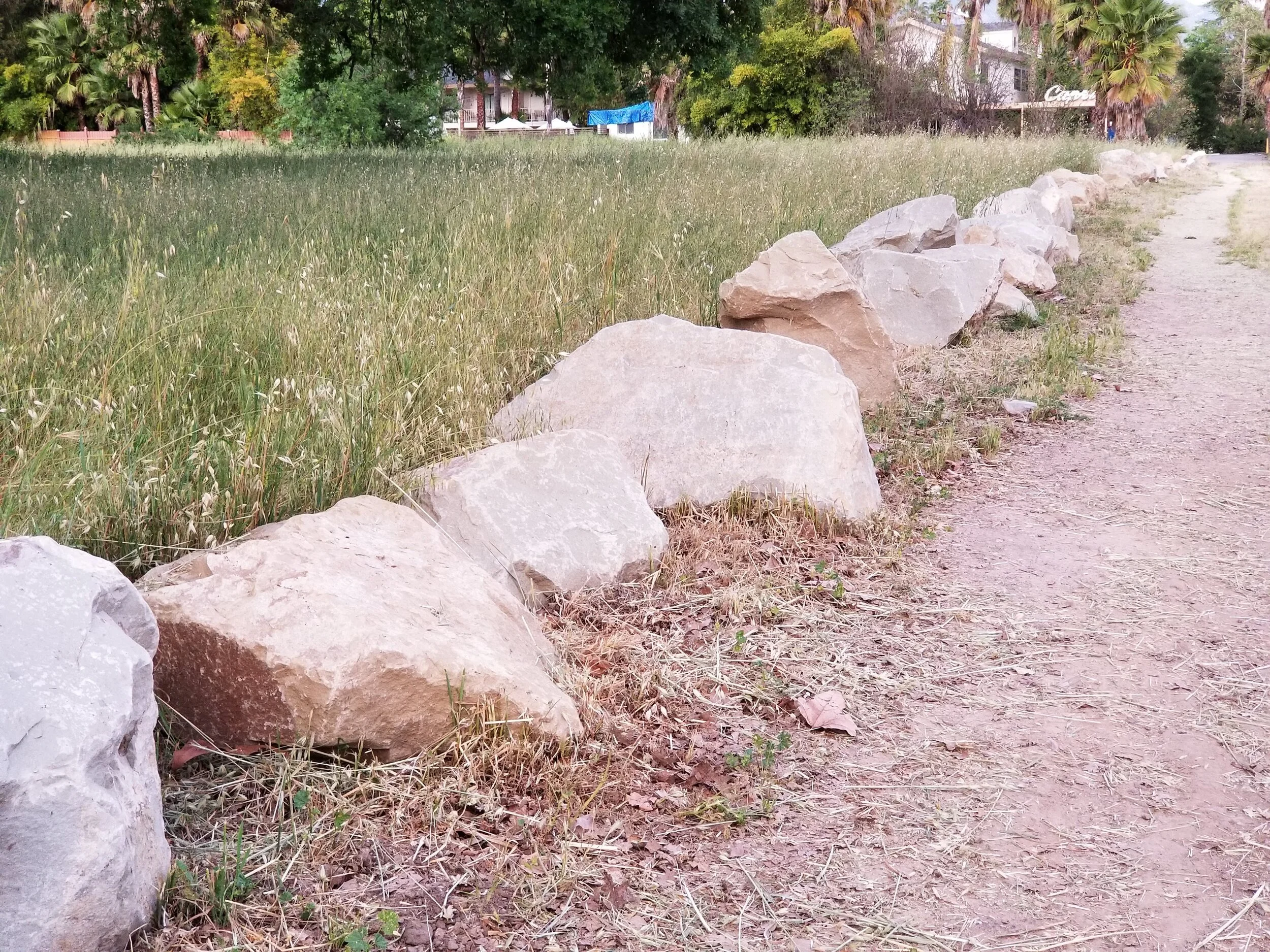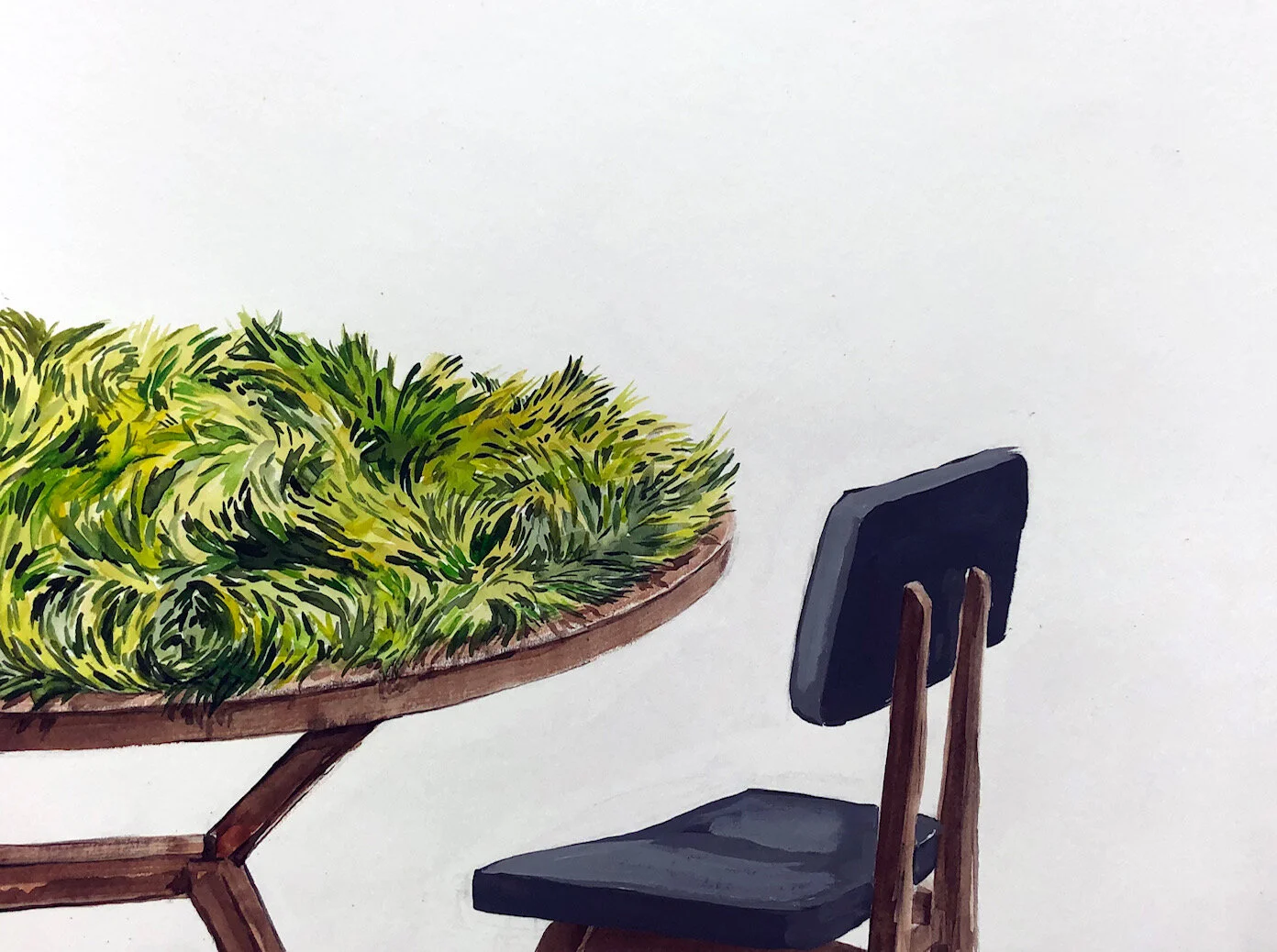Found Installations
By Tom Pazderka
I’ve been thinking hard about what to write lately, so as not to continue the pile of articles that attempt to say something ambiguous about ‘art in a time of coronavirus,’ it’s negation, and still bring something interesting to the table. I realize how tough it is to bring something new rather than clichéd in an age where we are all seemingly experts on an event and a pandemic most of us know nothing about thanks to and/or despite the 24 hour media cycle covering every square inch of Covid-19 territory.
I’ve come to certain conclusions about my own situation and the media event still unfolding in front of our eyes, but I will mostly keep quiet about them because of the inevitable pile-on mentioned above. Recent events and changes have been wide and sweeping. Much of these changes we will have to analyze and come to terms with in retrospect, the way peoples of the past have done with radical changes due to plagues, wars and famines.
In almost all aspects we have become total virtual beings. We have outsourced our lives to the online nether regions that Silicon Valley was hoping for and engineering more than twenty years ago. What back then seemed impossible, has become a reality with a snap of a finger and a radical reassertion of a ruling ideology that was underway as we shopped online for necessities and were catching up on our favorite shows. Kids became ever more tied to the screen in makeshift home school environments and virtual art exhibitions proliferated. It is the notion of art that I think needs a little consideration now.
I thought about doing virtual studio visits with other artists, starting a podcast or ‘going live,’ but I didn’t care for the idea of putting yet more stuff out into cyberspace where many-a-good-idea goes to die a slow death by obscurity. Think local. Forget Zoom. One of the ways to do this is to try and find the extraordinary in the ordinary, to notice the small details, the arrangement of cones and road signs along streets, the ground falling in by the electric pole revealing layers of gravel and dirt beneath. My mind has wandered into the realness of the banal, mundane and the regional, the scapes that are not so much forgotten, but mostly disregarded as unremarkable.
This has been a great time to reacquaint myself with the minutiae of daily sights, something that used to preoccupy me during my daily drives to and from work, to and from the grocery store, sights I was too busy or too tired to see properly. Some of them I’ve started to think about as ‘found installations,’ a concept that is not so much new, but renewed, and one that correlates nicely with the idea of the sacred everydayness that is often overlooked and overshadowed by other more ‘important’ things in life. Like the growing weeds in the cracks of a parking lot or the trimmed hedges along a short walking path abutting an array of rocks and boulders placed there like some kind of straightened henge.
We should also not forget the piles of mulch, sand, boulders and gravel, and the slowly deteriorating machinery that made them. The rock yard, the lumber yard or the avocado grove, sights as ordinary and mundane, but built in time and space as any site-specific installation, just perhaps with a different outcome in mind and not necessarily nestled within an intellectual space.
I live in Ojai now, a town situated in a romantic landscape that reminds me of home. Not so much of my real home, but of a certain feeling of home I haven’t felt yet since moving to California almost six years ago. It is almost impossible to isolate and to understand such a feeling objectively let alone empirically. In the early 20th century Sigmund Freud wrote of the challenge he felt in understanding something that he called an ‘oceanic’ feeling, interconnectedness or ‘sensation’ of God or faith. Freud’s description owed a lot to his sensibility of a physician, an objectively and scientifically driven mind, which had little to do with subjective notions of home, religion or nostalgia.
Though a psychologist dealing with the unconscious, he was interested in these occluded sections of the human psyche, mostly because he sought to explain human behavior and figure out a way to influence it. On the subject of art, for example, he writes, “People who are receptive to the influence of art cannot set too high a value on it as a source of pleasure and consolation in life. Nevertheless, the mild narcosis induced in us by art can do no more than bring about a transient withdrawal from the pressure of vital needs, and it is not strong enough to make us forget real misery.”
Freud is speaking about art as a sort of narcotic against pain. He continues by couching art within the concept of the pleasure principle, which he claims is one of the strongest driving forces behind human endeavor, a drive to satisfy basic needs such as hunger, thirst, sex and so on. It is the elimination or avoidance of pain and unpleasure that Freud believes is responsible for much of human activity which is just as much at work as is the drive toward pleasure itself.
Art in its basic function can be said to act as an analgesic of the mind or the soul, it provides harmony, peace or intellectual satisfaction, but the obverse is also true, art that is made precisely for the reason to produce unpleasure is not in and of itself excluded from the very same principle. Our current understanding of art is beyond Freud’s reductionist formulation, but this does not negate what Freud said. On the contrary, the death drive, or the tendency toward destruction, is affirmed in many artworks that deal with the subject of pain and anxiety. Perhaps art still has a long way to move beyond psychotherapy.
Freud says little about what art is beyond a feeling or a description. Art moves us, but why? There seems to be a kind of ‘being’ of art itself. It is the ‘being’ of art that is similar to the ‘being’ at home, even if we are not in a place that is our true home, the place where we were born. Many religions have a condition which they call a ‘return home.’ Art is perhaps best served not in the Freudian sense of a pleasure seeking or pain-avoidant principle but perhaps as a way of being-in-the-world in the Heideggerian sense.
Since at least the Romantic era, artists have had a deep fascination with ruins and ruination. Images of old barns and shacks proliferate the photographic canon the way that old paintings, sketches and lithographs of European castle ruins did in the 19th century. Those were the early site-specific installations which had to come into their own centuries after they were built. We have lived among the ruins of older generations since the dawn of civilization. We mostly attempt to salvage, save and continue using what’s already built, added with the new, but occasionally we trim the excess by willful destruction and let nature take care of the rest. It is a complex system of death and renewal. Art enters the frame along the edges, often as a descriptor or document.
I have also thought about the lives of houses. Isn’t it strange that a house that is lived-in will appear to us as ‘alive’ mostly due to some external process of maintenance, but at the same time there is an inner working of the house which has inhabitants living in it, because as soon as the same house is left vacant, it does not take long for the house to appear ‘dead’ to us. A house that has people living in it will take much longer to deteriorate than an empty house, even if it is poorly maintained or not maintained at all. A house is a living sculpture or installation, a document, a work of art, and home is inextricably tied to a place that satisfies conditions entirely subjective and particular to each individual.





